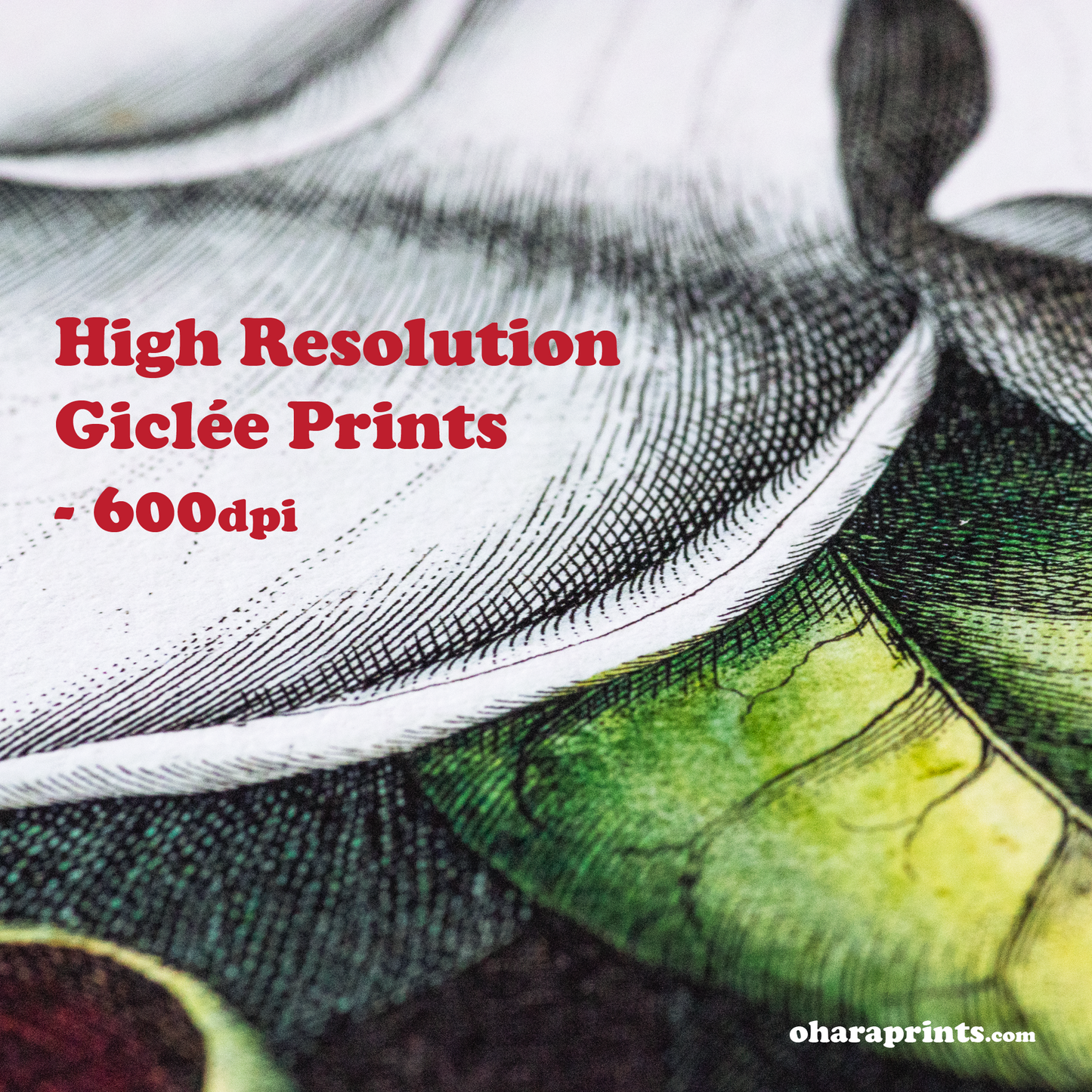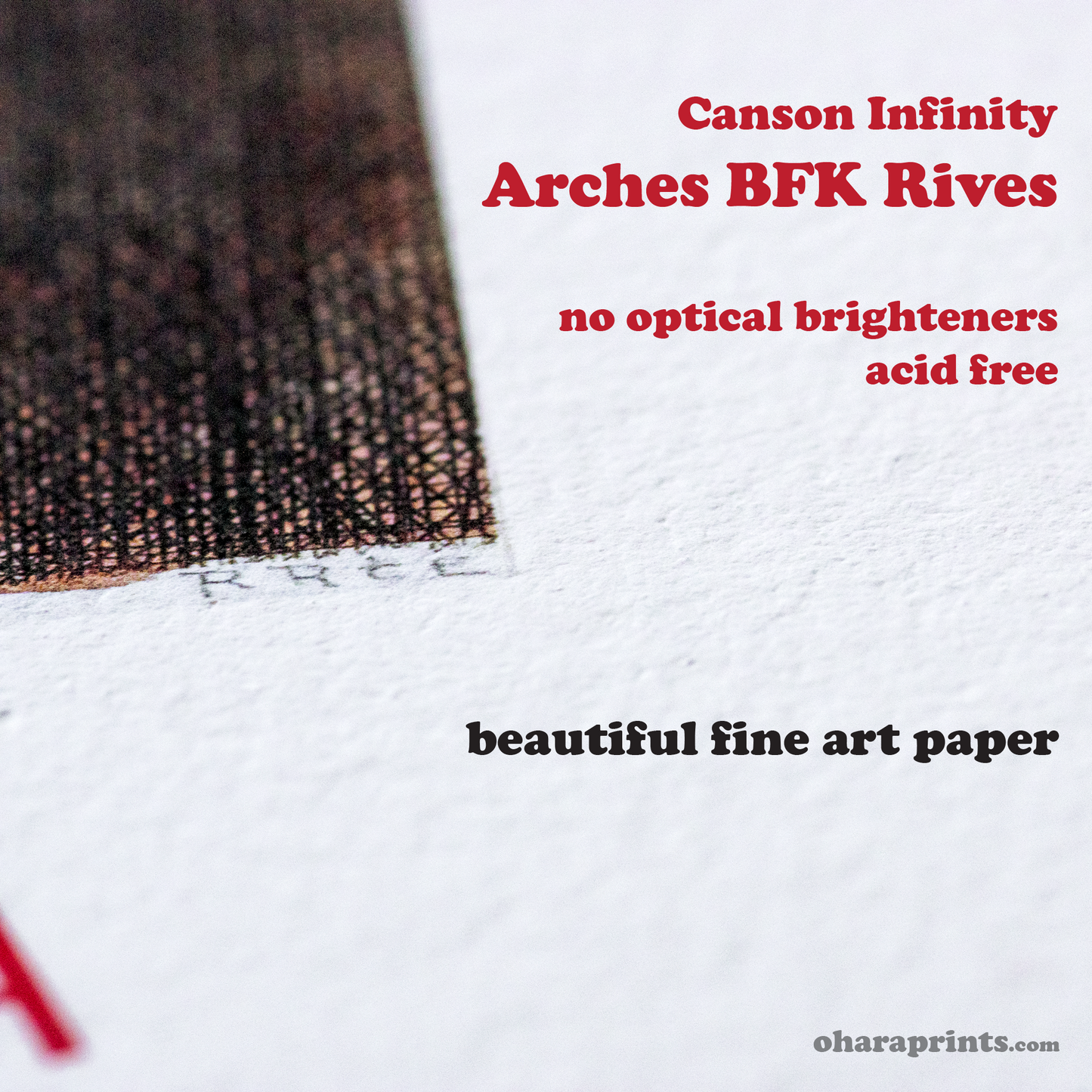Ohara Prints
PAUL GAUGUIN - The Red Cow
PAUL GAUGUIN - The Red Cow
Couldn't load pickup availability
THE ARTWORK
Paul Gauguin’s “The Red Cow” is a striking example of his post-impressionist style, capturing the essence of rural life in vivid colors. Painted in 1889, this work features a serene countryside scene with a woman in traditional attire working in a farmyard with a red cow nearby. Both the woman and the cow are depicted with their heads extending beyond the edge of the frame. In the middle ground, two figures are seen working diligently in the fields, while the background showcases rolling hills and a tranquil sky.
Gauguin’s use of bold colors and strong outlines emphasizes the simplicity and beauty of pastoral life. This painting reflects his fascination with the lives of ordinary people and their deep connection to nature. “The Red Cow” invites viewers to appreciate the harmony and rhythm of rural existence, making it a timeless piece in Gauguin’s oeuvre.
THE ARTIST
Paul Gauguin (1848-1903) was a French painter, sculptor, printmaker, ceramist, and writer. Initially working as a stockbroker, Gauguin began painting in his spare time, influenced by artists like Camille Pissarro. The financial crisis of 1882 prompted him to pursue art full-time. Gauguin’s early works were influenced by Impressionism, but he later developed a unique style characterized by bold colors, strong outlines, and a focus on symbolism and primitivism.
In 1888, Gauguin famously collaborated with Vincent van Gogh in Arles, though their partnership was short-lived. Seeking inspiration, Gauguin traveled to Tahiti in 1891, where he created some of his most famous works, capturing the island’s landscapes and people. His time in Tahiti and later in the Marquesas Islands profoundly influenced his art, leading to a more simplified and symbolic style.
Gauguin’s work was not widely appreciated during his lifetime, but he is now recognized as a pioneer of modern art. His innovative use of color and form had a significant impact on future generations of artists.
THE PRINT
• A4 Size = 29.7cm x 21cm = 11.7" x 8.25"
• A3 Size = 42cm x 29.7cm = 16.5" x 11.7"
• High resolution giclée print - 600dpi
• Printed to order
• Unframed & unmounted
• Professionally printed using Canon imagePROGRAF printers
• Digitally restored by OharaPrints from high resolution scans of the original artwork
• Made in and shipped from Casterton, Victoria, Australia
PAPER
• Canson Infinity - Arches BFK Rives White
• Paper weight = 310gsm
• 100% cotton
• Archival, museum grade
• Acid free
• No OBAs (optical brightening agents)
Arches BFK Rives is a high-quality, archival-grade paper manufactured at the Arches paper mill in France - one of the oldest papermakers in Europe. It is made from 100% cotton rag using a time-honoured manufacturing process, giving the paper exceptional durability, longevity, and resistance to yellowing or deterioration over time. Despite its substantial weight and thickness it maintains a very soft and supple feel. The paper has a natural white tone and is completely free of any optical brighteners (OBAs), allowing for superb colour rendition and deep blacks.
INK
• Canon Lucia Pro Inks
• Pigment based
• Archival, museum-grade
• Brilliant colours, even gradient and razor-sharp lines
• Highly stable and fade resistant, excellent humidity-fastness
SHIPPING & HANDLING
• All orders are dispatched on the NEXT BUSINESS DAY after receiving the order
• All prints are shipped via AUSTRALIA POST with TRACKING
• For postage rates and estimated delivery times please see our SHIPPING page
• All prints are shipped flat, not rolled
• Each print is individually placed into a resealable, archival grade plastic protective sleeve
• Prints are carefully packaged in very sturdy 700gsm cardboard envelopes, along with 1050gsm boxboard sheets which provide extra strength & rigidity to prevent bending or folding during transit




















